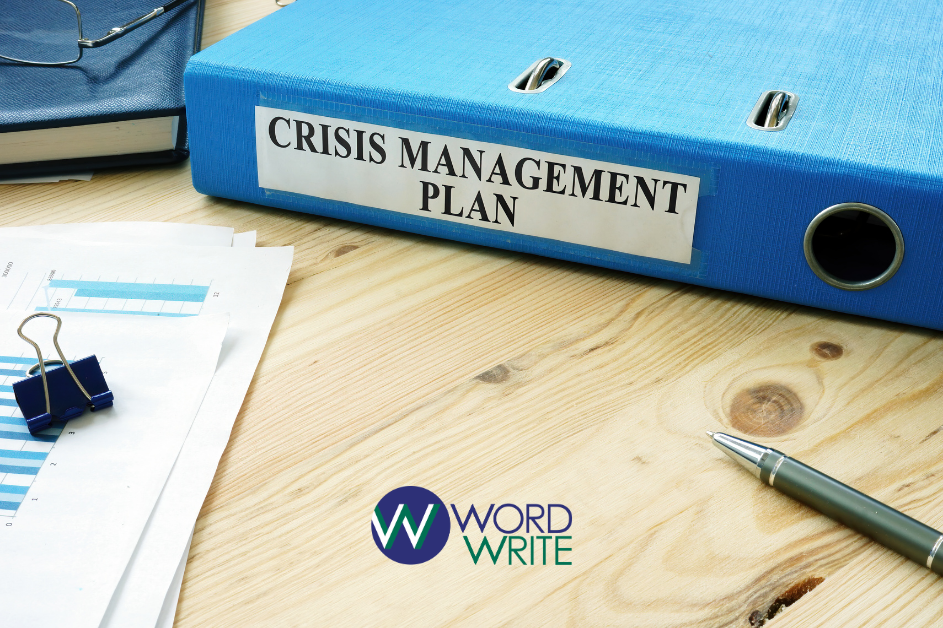
At WordWrite, we have nearly 25 years of experience helping organizations communicate their value to customers, clients, and key stakeholders.
Unfortunately, that type of support sometimes comes in the form of crisis management.
In fact, we typically handle about a dozen crises a year. Most of them (thankfully) you never read nor hear about. A few are so big they’re all over the news.
As referenced in this blog before, the annual PwC global crisis study revealed that 60% to 80% of all crises are predictable, depending on the industry. Statistics from the Small Business Administration indicate 40% of small businesses will not survive a disaster because they aren’t sufficiently prepared.
Despite those alarming numbers, most organizations we’ve worked with aren’t prepared to handle these types of situations. Several recent examples continue to illustrate how low a priority crisis planning is across the wide spectrum of industries, organizations, companies, and municipalities we assist.
We typically divide the stages of a crisis into three phases:
- Stop the bleeding
- Win hearts and minds
- Restore reputation
Our decades dealing with all types of crisis situations tell us this won’t be the last time they deal with this incident, and they will be right back to square one, scrambling to contain the latest uncomfortable details and to respond to the growing chorus of difficult questions from the media.
Examples vary from specific incident to specific incident but here are some common challenges we face when we work with clients who lack a crisis plan. These clients unfortunately are often more concerned with short-term damage control than long-term planning, preparedness, and a thoughtful examination of the most likely crisis scenarios they’ll need to consider down the road.
- Who should be on the crisis response team?
- Who do we attribute media inquiries to when faced with questions?
- What are the key messages we want to convey about the core values of our organization, regardless of the nature of the crisis?
- How do we handle the process of handling media inquiries?
- How do we ensure we have all the relevant facts when creating statements for the public, customers, clients, or the media?
- What is the process for getting statements and public facing materials approved?
For more context, let’s focus on the fifth and sixth questions above. When you continuously respond to (or update) statements for the news media reactively and based on the coverage you’re receiving in the middle of a crisis, you’re playing a game of media Wack-A-Mole. One outlet updates its coverage, and you adjust your response. Another includes new reporting that has another gap in the information, so you adjust your response again.
This approach costs you time, money (often by eating up billable hours with the outside resource you’ve hired to assist with the crisis), and most important, credibility. On that last point, if you’re constantly updating your statements, then journalists and your other key audiences will start to wonder why the new information with relevant facts wasn’t shared in the first place. They might even begin to think you aren’t being truthful because the story keeps changing.
Without a clear crisis response team in place and a crisis management structure to share information internally for approval and externally with media and critical stakeholders, an organization is stuck in the mud, often beholden to the whims and wishes of individual or department priorities without consideration of the greater concern of protecting the reputation of the company or organization at large.
There will always be fallout from a crisis. There often is no perfect solution. But our decades of experience and hundreds of crisis engagements have taught us it’s best to avoid self-inflicted wounds. In a crisis, you never want to make a bad situation worse.
You never leave your home for a new destination without putting directions in your phone or car’s navigation system. You have insurance for your home or apartment and smoke alarms and other protections. You don’t simply hope for the best in case of an emergency.
And you should never leave the reputation and future success of your business or organization up to chance.
You won’t always know the precise crisis you’ll encounter, but you can have a plan and a process to handle all crises.
Want to learn more about effective crisis planning? Visit our resource center here.
